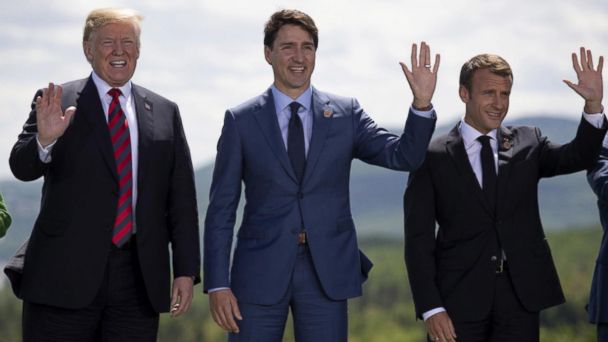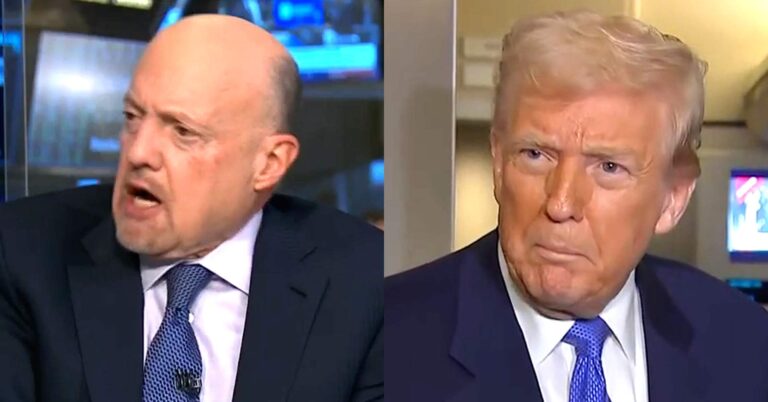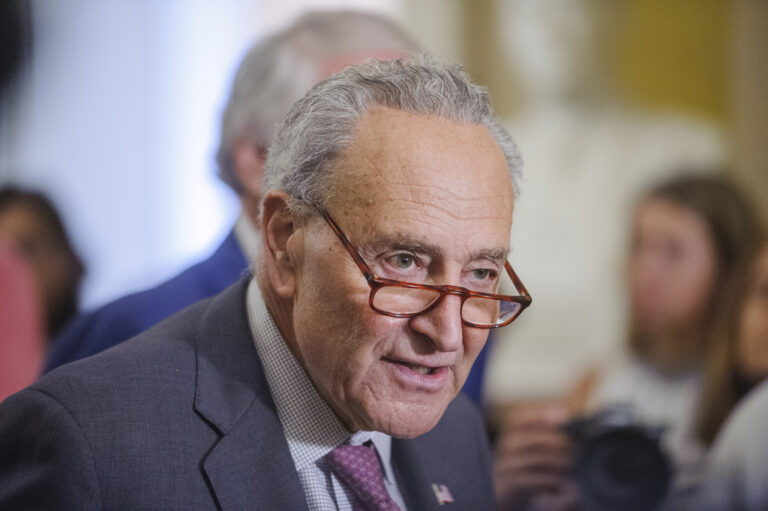Insulting the host, alienating allies and threatening to suspend business with other countries: President Donald Trump was in full trade-warrior form for the weekend summit of the Group of Seven wealthy democracies in Canada.
The president’s acrimony raised the risk of a trade war that could spook financial markets, inflate prices of goods hit by tariffs, slow commerce, disrupt corporations that rely on global supply chains and jeopardize the healthiest expansion the world economy has enjoyed in a decade.
Leaving the conclave in Quebec on Saturday, Trump threatened to “stop trading” with America’s allies if they defied his demands to lower trade barriers. And he shrugged off the risk that his combative stance would ignite escalating tariffs and counter-tariffs between the United States and its friends — the European Union, Canada, Japan and Mexico.
“We win that war a thousand times out of a thousand,” the president declared before jetting off to negotiate the denuclearization of the Korean peninsula.
Later, he picked a Twitter fight with the host of the G-7 conclave. Calling Prime Minister Justin Trudeau of Canada “very dishonest and weak,” Trump said the U.S. was withdrawing its endorsement of the G-7’s communique, in part over what he called Trudeau’s “false statements” about U.S. tariffs at a news conference.
“I think the way this plays out is we end up with our trading partners responding in kind — a threat for a threat, a tariff for tariff,” said Rod Hunter, a lawyer at Baker McKenzie and a former economic official on the National Security Council. “You end up with gradual escalation.”
The summit at Quebec’s Charlevoix resort failed to produce any truce in an intensifying trade conflict. Trump has imposed tariffs on steel and aluminum imported to the United States from the EU, Canada and Mexico. He has justified the tariffs by claiming that a reliance on foreign steel and aluminum threatens U.S. national security.
Outraged, the allies have responded by targeting American products, including cheese, bourbon and pork. On Saturday, Trump warned that “if they retaliate, they’re making a big mistake.”
Trudeau’s assessment was glum.
“If the expectation was that a weekend in beautiful Charlevoix with all sorts of lovely people was going to transform the president’s outlook in the world,” the Canadian prime minister said, “then we didn’t quite reach that bar.”
Trump had run for the presidency on a vow to shrink the gaping U.S. trade deficit — $566 billion last year. To him, the gap between the value of what America sells and what it buys in foreign markets reflects economic weakness, trade accords that are unfair to the U.S. and abusive policies by other countries.
Turning his campaign rhetoric into action against friend and foe, he has taxed imported solar panels and washing machines, imposed tariffs on steel and aluminum, threatened tariffs on up to $150 billion worth of Chinese products and ordered an investigation into whether imported cars, trucks and auto parts should be taxed — on national security grounds.
“He’s a puncher or a counterpuncher, and he thrives on conflict,” Hunter said. “He’s not likely to change. As long as he’s president, this is the approach we have to expect.”
Tim Buthe, a Duke University political scientist who studies trade, said, “Is it possible that Trump sees this mostly as a poker game and is just bluffing, and if the others cut him a deal, we’ll return to normal relatively soon?”
Yet Buthe cautioned: “These kind of things can spiral out of control fairly quickly” as countries hammer each other with escalating retaliatory tariffs.
Speaking to reporters at the end of the summit, Trump repeated his assertion that other countries — including friendly allies — have outwitted U.S. negotiators in the past, capitalized on flawed agreements and run up big trade surpluses with the United States. The United States last year posted a trade gap in goods and services of $101 billion with the EU, $57 billion with Japan and $69 with Mexico. (The U.S. managed a $3 billion surplus with Canada.) Trump has condemned Canada’s tariffs on imported dairy products and the EU’s tariffs on auto imports.
“We’re like the piggy bank that everybody is robbing,” Trump said. “And it’s going to stop. Or we’ll stop trading with them.”
Ending trade with the other G-7 countries, the president asserted, would prove “a very profitable answer, if we have to do it.”
Economists and trade analysts note that the rules of world trade rules aren’t as one-sided as the president argues. According to the World Bank, America’s average tariff is 1.6 percent, the same as the EU’s, only slightly higher than Japan’s 1.4 percent and double Canada’s 0.8 percent. The rules of the World Trade Organization do allow Canada’s punishing tariffs on dairy and the EU’s on autos. But in WTO negotiations, the United States bartered those and other things away for what it wanted, including strong protections for intellectual property, or IP.
As a result, Hunter said, America has become “the world’s leading IP-based economy.”
During the talks in Quebec, Trump surprised G-7 leaders by proposing an end to all tariffs and trade barriers. The “ultimate thing,'” he said, would be, “you go tariff-free, you go barrier-free, you go subsidy-free.” The president offered no roadmap to a tariff-free world, and analysts greeted the proposal with skepticism.
“What a happy thought,” said Hunter, the trade lawyer. “But who would take this challenge seriously from the president who declared in his inaugural address that ‘protection will lead to great prosperity’ “?
Sen. Ben Sasse of Nebraska, a Nebraska Republican, said in a statement: “If the president is actually serious about leading the expansion of a G-7 no-tariff, free-trade agreement, that’s tremendous, tremendous news — for the U.S. and for the free nations of the world. …But the path to more trade begins with less whining on the global stage.”
Trump has failed so far to get the steel and aluminum tariffs to pressure Canada and Mexico into revamping the North American Free Trade Agreement to better favor the United States. The president has sought to revise NAFTA to encourage manufacturers to invest more in America and shift production from low-wage Mexico to the United States. The talks have floundered over several issues, including Trump’s insistence on a clause that that would end NAFTA every five years unless all three countries agree to sustain it.
At the G-7 summit, Trump’s spokeswoman, Sarah Huckabee Sanders, said the U.S. was “close to a deal” on NAFTA. On Saturday, Trump said again that he might pursue separate trade pacts with Canada and Mexico instead of a continuing with a three-country NAFTA deal.
But Trudeau later contradicted the president: “We will not, cannot sign a trade deal that expires every five years. That is not a free trade agreement.”
Afterward, Trump lashed out at Trudeau.
“Based on Justin’s false statements at his news conference, and the fact that Canada is charging massive Tariffs to our U.S. farmers, workers and companies, I have instructed our U.S. Reps not to endorse the Communique as we look at Tariffs on automobiles flooding the U.S. Market!” the president tweeted.
Some members of Congress are beginning to push back against Trump’s pugnacious approach. A bipartisan group of senators last week introduced legislation that would require Congress to approve any tariffs imposed in the name of national security — something the president can now do on his own.
“People keep saying, ‘We’re going to pull back’ ” from a trade war, said Mary Lovely, a Syracuse University economist. “Unless there’s congressional intervention, it’s hard to see where this goes.”
(AP)











